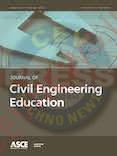Abstract
Solving ill-structured problems is a complex task that is required of engineers who work in industry. To better prepare undergraduate engineering students for this complex task and their future professional careers, this paper provides an analysis of the results of research focusing on the study of problem-solving processes adopted by civil engineering students, faculty members, and practicing engineers. This exploratory work presents findings concerning the way in which 16 participants solved an ill-structured engineering problem and examines similarities and differences between the participants in terms of their problem-solving processes. This study was guided by the following research question: What specifically are the problem-solving processes of (1) students, (2) faculty, and (3) practicing engineers, and what are the similarities and differences between them when solving an ill-structured problem? In order to answer this research question, verbal protocol analysis was used. Participants were asked to think aloud as they formulated potential solutions to the proposed problem. Our findings indicate some distinct differences between students, professors, and practicing engineers in their problem-solving processes. Faculty were found to double-check their solutions and make assumptions more than students and practicing engineers, while students were found to express their feelings more and use analogies and outside knowledge less than faculty and practicing engineers. These differences between students, faculty, and practicing engineers suggest that engineering curriculum and instruction should supplement well-structured problems with ill-structured problems in engineering classrooms in order to help students become familiar with multiple problem-solving approaches available to them and better understand the connection between the workplace and the classroom.

